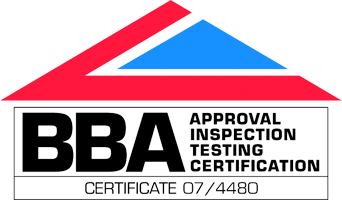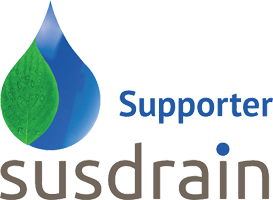Blog Archives
ADS extends StormTech SuDS attenuation and storm water treatment range
The new StormTech SC-800 arch-shaped chamber from Advanced Drainage Systems (ADS), a global leader in corrugated thermoplastic drainage pipes and a specialist in water management systems; not only holds more water than the company’s current best-selling and most popular chamber – the SC-740 – but also requires less embedment stone for installation, and has a reduced minimum cover depth, resulting in greater storage capacity for the same footprint area and depth, plus reduced construction time and cost.
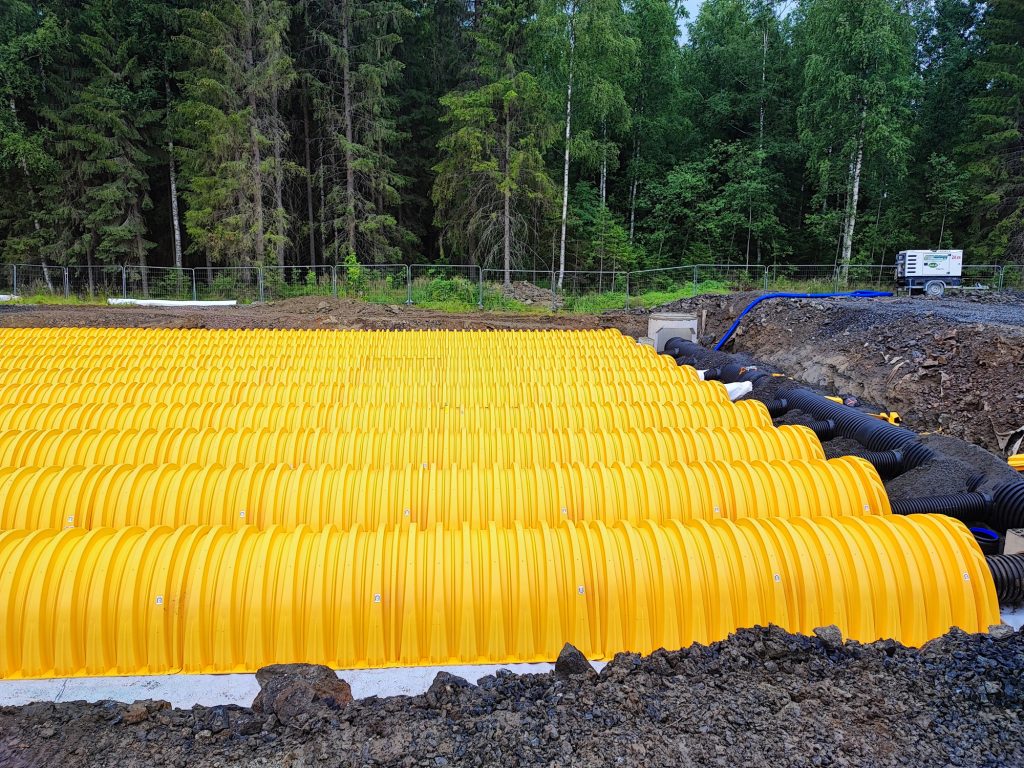
The SC-800 maximizes storage within a compact footprint while its corrugated design pares down the minimum cover depth and provides superior structural integrity. The latest development in the company’s drive to reduce footprints sees the SC-800 with a 7% smaller footprint than the SC-740 for the same storage volume.
Unlike other below-ground SuDS attenuation systems such as crates and pipes, which allows runoff into the entire tank storage space, the StormTech arch-shaped system directs first flush flow into the patented Isolator Row – an integral water quality treatment device that has two treatment stages: sedimentation and filtration.
Isolator Row is independently tested and validated to remove more than 80% Total Suspended Solids (TSS), often avoiding the need for a costly sediment removal system upstream of the tank. Isolator Row can also remove other pollutants such as particulate-bound hydrocarbons and metals.
Another two treatment stages can take place within the embedment stone: adsorption and biodegradation, leading to even greater removal efficiencies. Isolator Row is the only part of a StormTech system that needs maintenance, as the other chambers only receive ‘clean’ untreated runoff from flows exceeding the first flush flow rate.
Cleaning is carried out at intervals of typically two to five years, depending on local conditions, using standard sewer jetting equipment and a vacuum tanker to remove the waste.
StormTech’s arch design sheds load from the chamber to the surrounding stone, which forms a structural arch that transfers loads into stone columns between the chambers and spreads the load through to the native soil, resulting in extraordinary minimum and maximum cover depths. The new SC-800 chamber has a minimum cover depth of 375mm. All StormTech standard installation details are based on HGV traffic loading.
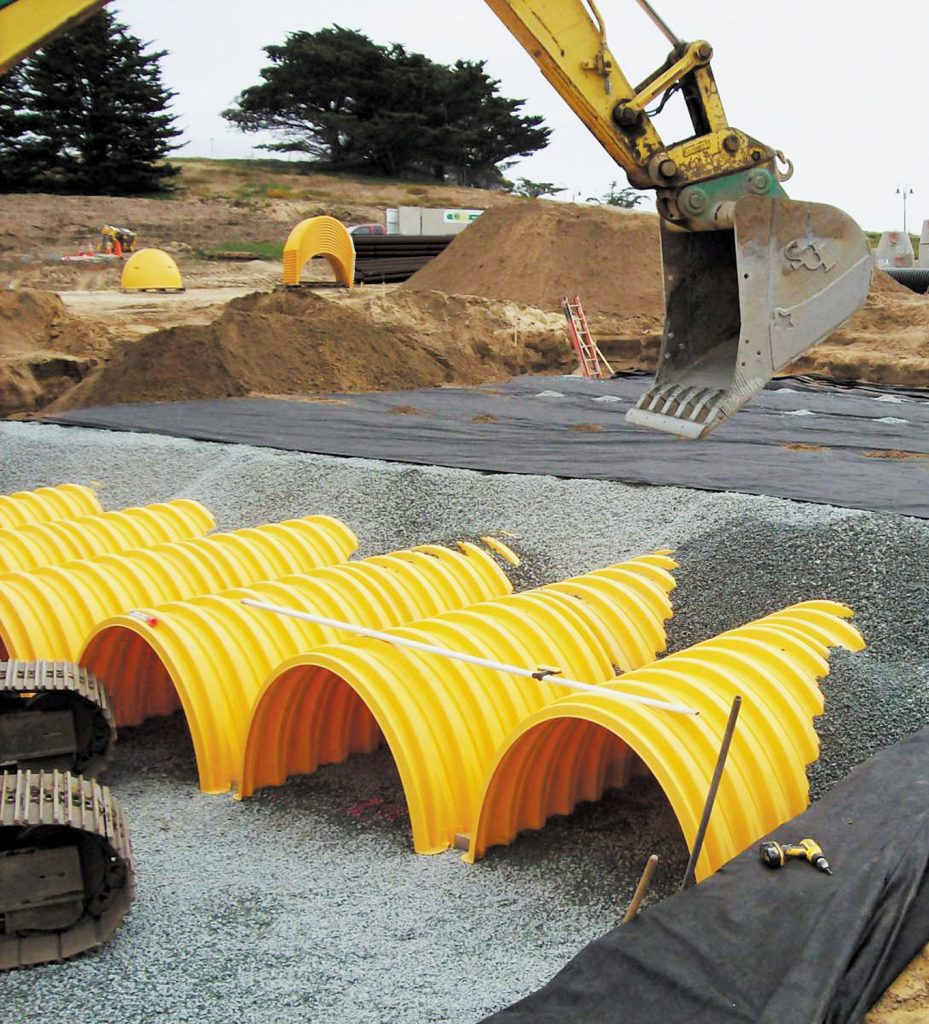
The design of StormTech chambers means that the units can be stacked, taking up a minimum of space for transportation, storage and to speed-up installation.
By adding SC-800 into the StormTech range, ADS has enhanced design flexibility for SuDS attenuation and storm water management. This innovation exemplifies ADS’s commitment to providing cutting-edge products that meet the evolving needs of the construction industry.
For more information on Advanced Drainage Systems, visit www.adspipe.co.uk.

Crate Expectations
With strengthening focus on flooding and water quality, CIRIA’s advice to oversize crate-based attenuation tanks by 10% has never been more relevant, says Stuart Crisp, UK manager at Advanced Drainage Systems (ADS).
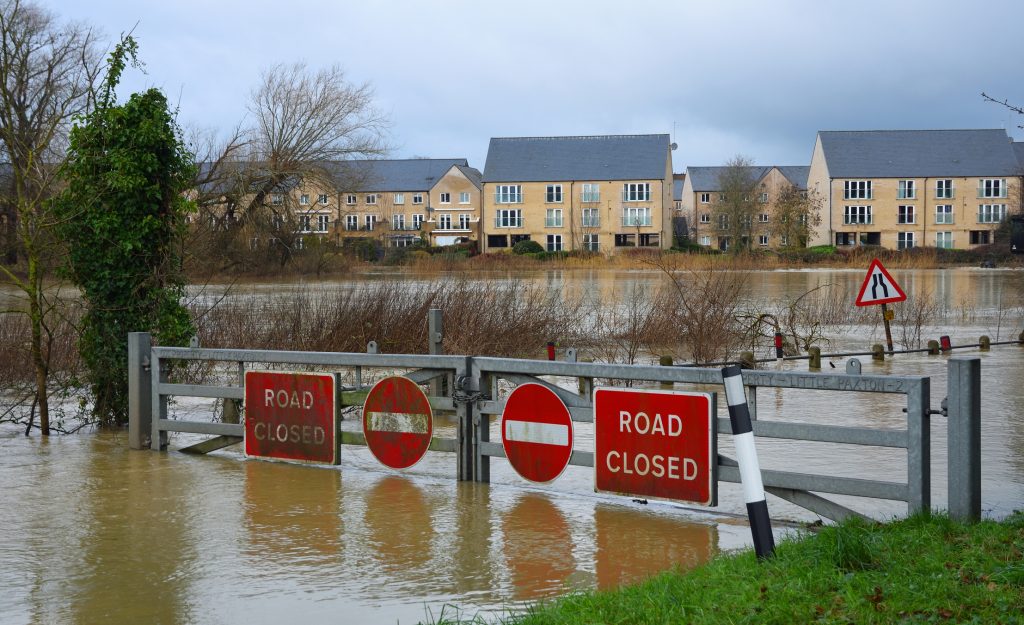
There’s a reason why the CIRIA SuDS Manual C753 suggests that “difficult to clean” SuDS attenuation systems, such as below-ground crates, should be oversized by 10%: there is a risk that sediment will build up in them, reducing their storage capacity.
With increasing legislation to manage flood risk and to prevent pollution, and more intense rainfall events, this advice becomes even more pertinent. There is a higher volume of water for SuDS devices to deal with and, when these events follow dry spells, more particulate matter and pollutants are swept along with surface water.
Unfortunately, this need to upsize crate-based attenuation tanks by 10% is often overlooked, thanks to focus on originally calculated target storage volumes. Furthermore, if the development is ‘value-engineered, the capital cost saving also often focusses on the original target storage volume. Up-sizing is often disregarded and, if the design is substituted for another type of attenuation system, the implications for water quality and the effectiveness of the treatment train are ignored.
The result is an increased risk of flooding and an increased risk to water quality.
Risk-based approach
The SuDS manual suggests a risk-based approach to designing SuDS management trains. Considering sediment, this means assessing: how much is likely to build up, depending on the location, how that load might change over time, and how often and easily devices will need to be cleaned.
Clause 21.5.3 of the manual explains the rationale for upsizing below-ground attenuation by 10%, while Table 21.2 shows the potential loss of storage capacity. Typically, commercial developments suffer from the highest sediment loading, followed by car parks, high-density residential developments and highways.
Removing sediment is also necessary to protect water quality and to avoid the negative impacts of pollutants. The predicted type, quantity and concentration of pollutants governs the choice of natural or manufactured SuDS element that would be most suitable.
Some underground attenuation systems, such as ADS’s StormTech arched system with its Isolator Row, are designed with in-built treatment systems which can be easily cleaned using standard equipment. This can negate the need for – and cost of – upstream treatment devices, while still protecting attenuation capacity and water quality.
Pay now or pay later
With the anticipated implementation of Schedule 3 of the Flood and Water Management Act 2010, SuDS adopting bodies will be looking hard at maintenance issues. Asset owners will need to be assured that the SuDS they are taking on will perform as designed throughout their whole lives.
Short-term savings in capital cost, which skimp on capacity and compromise water quality, can lead to long-term problems and greater whole-life costs, resulting in higher commuted sums for developers and an additional, avoidable cost burden on UK plc.
If a system is claimed to be exempt from the 10% up-sizing guidance, evidence that the system can be completely and easily cleaned should be demanded.
For more information on Advanced Drainage Systems, visit www.adspipe.co.uk.

